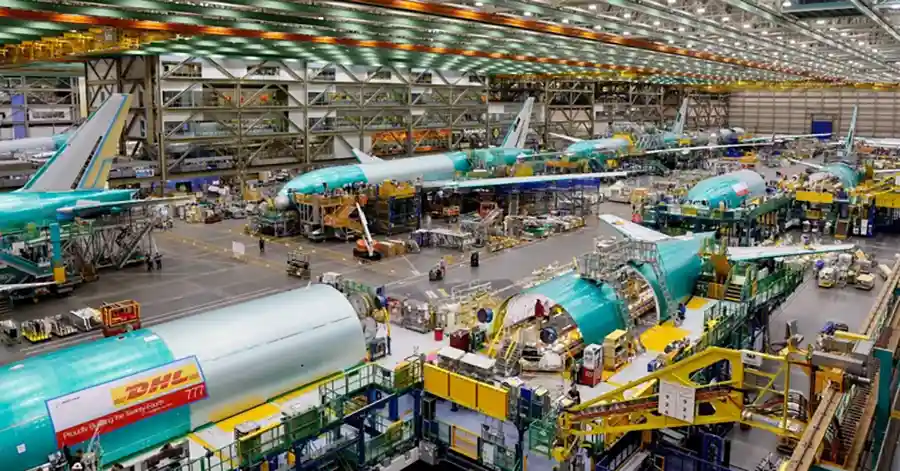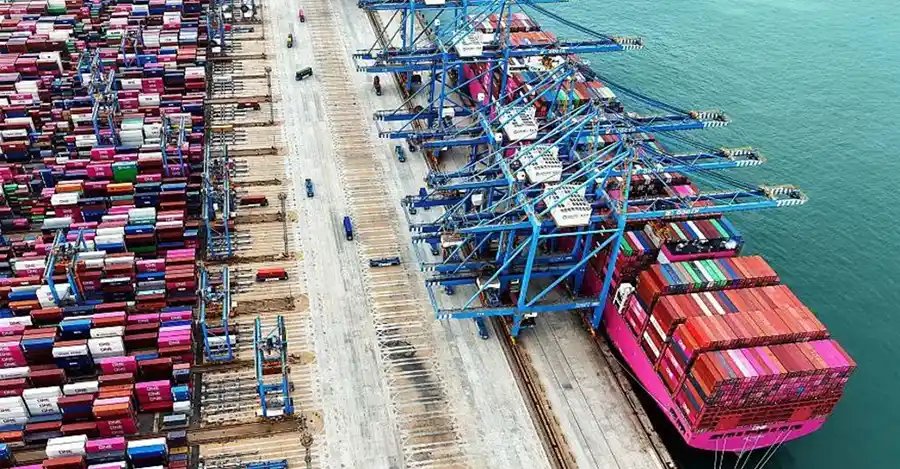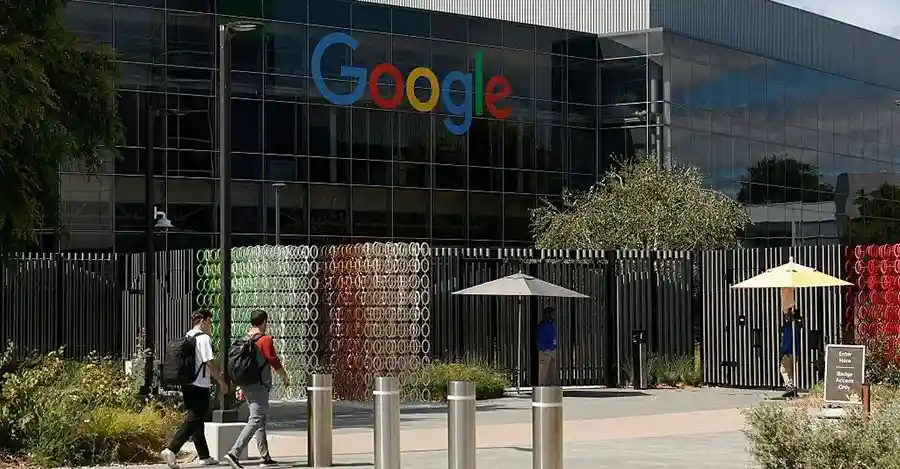In a groundbreaking announcement that underscores India’s emergence as a global technology powerhouse, Google parent company Alphabet revealed plans to invest a staggering $15 billion (£11.29 billion) to construct the world’s largest artificial intelligence data hub outside the United States. This ambitious project, set to transform the port city of Visakhapatnam in Andhra Pradesh, represents the single largest AI infrastructure investment by any tech giant in the Asia-Pacific region.
Thomas Kurian, CEO of Google Cloud, made the historic announcement at a high-profile event in New Delhi on Tuesday, emphasizing that this facility will become the cornerstone of Google’s global AI expansion strategy. “It’s the largest AI hub that we are going to be investing in anywhere in the world, outside of the United States,” Kurian declared, confirming that the $15 billion investment will be strategically deployed over the next five years.
This monumental development positions India at the forefront of the global AI revolution and signals a new era of technological sovereignty for the world’s most populous nation.
Why India? The Strategic Factors Behind Google’s Massive Investment
Low Data Costs and Explosive Internet Growth Drive Decision
India has rapidly emerged as the most attractive destination for AI data center investments globally, offering a unique combination of competitive advantages that tech giants find irresistible. The country’s exceptionally low data costs, coupled with one of the world’s fastest-growing internet user bases, create an ideal ecosystem for cloud computing and artificial intelligence expansion.
With over 850 million internet users and counting, India represents not just a massive current market but an exponentially expanding future opportunity. The country’s digital infrastructure has matured significantly over the past decade, supported by government initiatives promoting digital transformation across sectors.
According to industry analysts, India’s data center capacity crossed the critical 1 gigawatt (GW) threshold in 2024, nearly tripling its 2019 levels. This explosive growth trajectory aligns perfectly with Google’s long-term AI ambitions and global infrastructure expansion plans.
Visakhapatnam: The Strategic Location for Google’s AI Empire
Why Andhra Pradesh Won the Tech Giant’s Favor
The selection of Visakhapatnam, a major port city in southeastern India, reflects careful strategic planning. Andhra Pradesh state has aggressively positioned itself as India’s premier technology destination by offering compelling incentives including subsidized land, competitive electricity rates, and streamlined regulatory approvals.
State Technology Minister Nara Lokesh described Google’s commitment as “a massive leap for our state’s digital future, innovation, and global standing.” The facility will integrate cutting-edge cloud and AI infrastructure with renewable energy systems and an expanded fiber-optic network, creating a comprehensive technology ecosystem.
The Visakhapatnam hub will join Google’s elite network of AI centers spanning 12 countries, serving as the central node for South Asia and potentially the entire Asia-Pacific region. Its strategic coastal location provides advantages for cooling systems (critical for data centers) and excellent connectivity for submarine cable landings that carry international internet traffic.
For more insights on global technology investments, visit Singha Darbar.
Breaking Down the $15 Billion Investment Timeline
Five-Year Rollout Strategy and Infrastructure Development
Google’s $15 billion commitment will be systematically deployed over a five-year period, ensuring methodical construction and integration of multiple complex systems. This phased approach allows for:
- Years 1-2: Land acquisition, environmental assessments, and foundational infrastructure
- Years 3-4: Primary data center construction and renewable energy integration
- Year 5: Full operational capacity and network optimization
The investment encompasses not merely physical structures but represents a comprehensive ecosystem including:
- Advanced AI computing infrastructure with next-generation processors
- Massive data storage systems capable of handling exabytes of information
- Renewable energy facilities ensuring sustainable operations
- Fiber-optic network expansion improving connectivity across India
- Cooling and power systems utilizing innovative efficiency technologies
This timeline positions Google to capitalize on India’s projected data center capacity target of 6 gigawatts by 2029, as outlined in Andhra Pradesh’s ambitious digital infrastructure roadmap.
Sundar Pichai’s Vision: Accelerating AI Innovation Across India
Bringing Industry-Leading Technology to Indian Enterprises
Alphabet CEO Sundar Pichai, himself of Indian origin, expressed profound enthusiasm about the project’s transformative potential. “This facility will bring our industry-leading technology to enterprises and users in India, accelerating AI innovation and driving growth across the country,” Pichai stated.
The investment aligns with Pichai’s long-standing commitment to democratizing technology access in developing markets. By establishing world-class AI infrastructure in India, Google aims to:
- Enable Indian startups to compete globally using cutting-edge AI tools
- Provide enterprises with low-latency access to Google Cloud services
- Foster local AI talent development through proximity to advanced technology
- Support India’s digital economy transformation initiatives
- Create thousands of direct and indirect employment opportunities
This approach contrasts sharply with traditional offshoring models, instead positioning India as a genuine innovation center rather than merely a cost-effective service provider.
Trump Era Implications: Investing Abroad Amid ‘America First’ Pressure
Navigating Geopolitical Tensions in Tech Investment
Google’s announcement arrives at a politically sensitive moment, as US President Donald Trump has intensified calls for American companies to prioritize domestic investments. This $15 billion commitment to India—the largest overseas AI investment by any US tech company—represents a calculated strategic bet that could face political scrutiny.
However, Google appears confident that India’s market potential justifies this massive deployment of capital outside America. The company likely argues that establishing infrastructure in India:
- Serves 1.4 billion potential customers more effectively
- Reduces latency for regional users significantly
- Complies with Indian data localization regulations
- Positions Google competitively against Chinese tech rivals in Asia
- Creates long-term strategic advantages that benefit overall corporate performance
This investment decision reflects broader trends of tech giants balancing nationalist political pressures against global market realities and competitive necessities.
Understanding Data Centers: The Backbone of AI Revolution
What Makes These Facilities Critical for AI Development
For readers unfamiliar with data center technology, understanding what Google is building provides context for this investment’s significance. Data centers are sophisticated physical facilities housing the computing and networking equipment that organizations use to collect, process, store, and distribute massive amounts of data.
Modern AI data centers contain:
- High-performance servers with specialized AI processors (GPUs/TPUs)
- Massive storage systems managing petabytes to exabytes of data
- Advanced networking equipment including routers, switches, and firewalls
- Sophisticated cooling systems removing heat from thousands of processors
- Redundant power systems ensuring uninterrupted operations
- Security infrastructure protecting valuable data and intellectual property
AI workloads are particularly demanding, requiring exponentially more computational power than traditional applications. Google’s Visakhapatnam facility will feature the latest generation of these technologies, optimized specifically for machine learning and artificial intelligence applications.
India’s Data Center Boom: Context and Competition
Rapid Industry Growth Attracts Global Tech Giants
India’s data center industry has experienced explosive growth over recent years, transforming from a modest regional player into a global powerhouse. According to JLL’s India Data Centre Market Dynamics 2024 report, the industry crossed the critical 1GW capacity milestone in 2024, representing nearly triple the capacity available in 2019.
This remarkable expansion reflects several converging trends:
- Cloud adoption acceleration among Indian businesses
- 5G network rollout increasing mobile data consumption
- Government digital initiatives requiring enhanced infrastructure
- OTT platform expansion demanding local content delivery
- Financial technology growth necessitating secure data processing
Google joins other tech giants including Microsoft, Amazon Web Services, and Oracle in making substantial Indian investments. However, Google’s $15 billion commitment dwarfs previous announcements, establishing a new benchmark for the industry.
Andhra Pradesh’s aggressive incentive packages—offering subsidized land and electricity—have proven decisive in attracting these investments, creating a competitive advantage over other Indian states.
Formal Agreement and Implementation Timeline
Government Partnership Accelerates Project Launch
The Andhra Pradesh government announced that a formal agreement finalizing the project would be signed Tuesday, the same day as the public announcement. This accelerated timeline demonstrates the efficiency of India’s increasingly business-friendly regulatory environment.
The agreement likely covers:
- Specific land allocation and development rights
- Electricity supply guarantees and pricing structures
- Tax incentives and regulatory exemptions
- Environmental compliance frameworks
- Employment and local sourcing commitments
- Infrastructure development responsibilities
This rapid progression from announcement to formal agreement contrasts with the bureaucratic delays that historically plagued major infrastructure projects in India, signaling improved governance and administrative efficiency.
Renewable Energy Integration: Sustainable AI Infrastructure
Green Technology Powering Next-Generation Computing
A critical component of Google’s Visakhapatnam project involves renewable energy integration, addressing growing concerns about AI’s environmental impact. Data centers consume enormous amounts of electricity, and AI workloads are particularly energy-intensive.
Google’s commitment to sustainability includes:
- Solar power installations leveraging India’s abundant sunshine
- Wind energy integration utilizing coastal wind resources
- Energy efficiency optimization reducing overall consumption
- Waste heat recovery systems maximizing resource utilization
- Carbon offset programs achieving net-zero operations
This approach aligns with Google’s global commitment to operate on 24/7 carbon-free energy by 2030, while also addressing India’s own ambitious renewable energy targets.
Economic Impact: Jobs, Innovation, and Digital Transformation
Ripple Effects Across India’s Technology Ecosystem
The economic implications of Google’s $15 billion investment extend far beyond the immediate construction and operational employment. This project will catalyze:
Direct Economic Benefits:
- Thousands of construction jobs during development phase
- Hundreds of high-skilled technical positions for operations
- Local sourcing opportunities for materials and services
Indirect Economic Effects:
- Startup ecosystem stimulation through accessible AI infrastructure
- Educational institution partnerships developing relevant skills
- Secondary business development supporting the facility
- Regional economic development in Andhra Pradesh
Long-term Strategic Value:
- Enhanced India’s position in global technology value chains
- Accelerated AI adoption across Indian industries
- Improved global competitiveness of Indian enterprises
- Knowledge transfer and capability building in cutting-edge technologies
Industry experts estimate that each dollar invested in data center infrastructure generates multiple dollars in broader economic activity, suggesting Google’s investment could ultimately impact tens of billions in total economic value.
Final Thoughts: India’s Emergence as Global AI Hub
Google’s historic $15 billion investment represents more than infrastructure development—it symbolizes a fundamental shift in global technology power dynamics. India’s transformation from service provider to innovation hub reflects decades of human capital development, policy evolution, and strategic positioning.
As artificial intelligence becomes increasingly central to economic competitiveness, having world-class AI infrastructure within national borders carries strategic implications. For India, Google’s commitment validates policies promoting digital transformation while providing tangible tools for accelerating innovation.
The Visakhapatnam hub will serve as a testament to India’s rising technological sovereignty and its central role in shaping the AI-powered future. For Google, this investment secures access to one of the world’s largest and fastest-growing markets while establishing infrastructure advantage over competitors.






















Comments